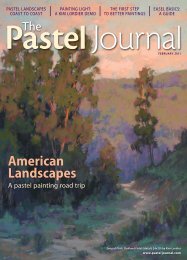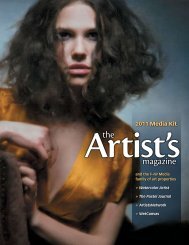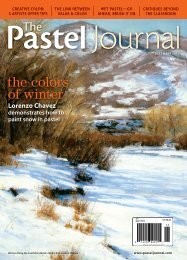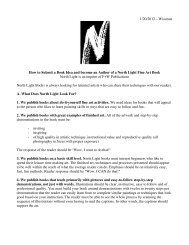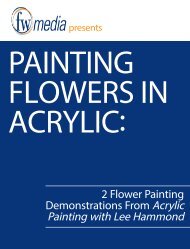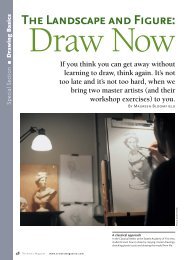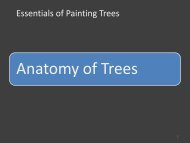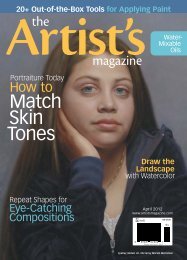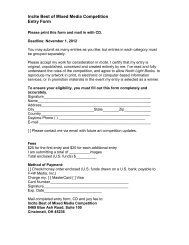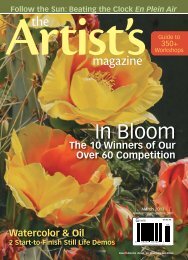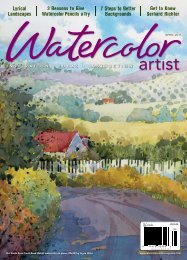The Artist's Magazine, January/February 2012 - Artist's Network
The Artist's Magazine, January/February 2012 - Artist's Network
The Artist's Magazine, January/February 2012 - Artist's Network
- No tags were found...
Create successful ePaper yourself
Turn your PDF publications into a flip-book with our unique Google optimized e-Paper software.
point oftensionpipefoldsthe spiralSpiral Foldpipe folds radiating outfrom the point of supportdrop foldshalf-lock fold—smaller one hiddeninside larger foldpoint of supportpoint of supportcreated by theconstruction ofthe garment<strong>The</strong> spiral fold is usually wrapped around a tubular form andbecomes more pronounced as the fabric is gathered in. A spiralfold may also be created by twisting a piece of cloth withno solid form underneath it. <strong>The</strong> spiral fold follows the form,revolving toward the point of tension and will change directionas points of tension and support vary. Spiral folds often occuron a sleeve between the shoulder and the elbow or betweenthe elbow and the wrist. <strong>The</strong>y may also occur on the torso ofa figure between the shoulder and the hip. You’ll notice herethat the point of support can also be part of the garment itself,depending on its construction.An Exercise inRelationshipsTo better understand the relationship between the formunderneath and how it influences the drapery on topof it, try this exercise. I have my students do this often,and I still do it from time to time to brush up on myskills.1. <strong>The</strong> Form Beneath: Draw an undraped figure. (Abathing suit will do if a nude model is unavailable.)Give the model a break and then have him or herput on a costume with loose-fitting drapery. Havethe model assume the same pose as before—thistime in costume.2. <strong>The</strong> Clothed Figure: Now place a sheet of tracingpaper over your drawing that’s big enough tofully cover it. Draw only the costume on your tracingpaper. At times you may find it helpful to liftup the tracing paper to observe the figure underneathand review its relationship to what’s on top.Repeat this exercise several times with a variety ofposes. It will become immediately clear how muchstronger the drapery studies are in establishing relationshipswith the underlying structure. While the model isposed with the drapery, try to design the drapery andunderstand the construction of the various folds.<strong>January</strong>/<strong>February</strong> <strong>2012</strong>95



